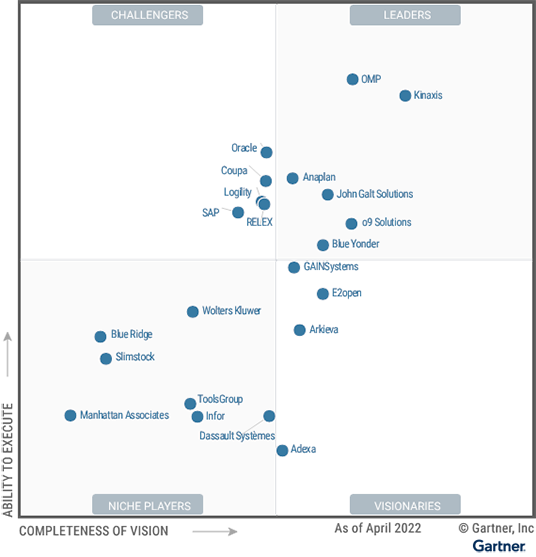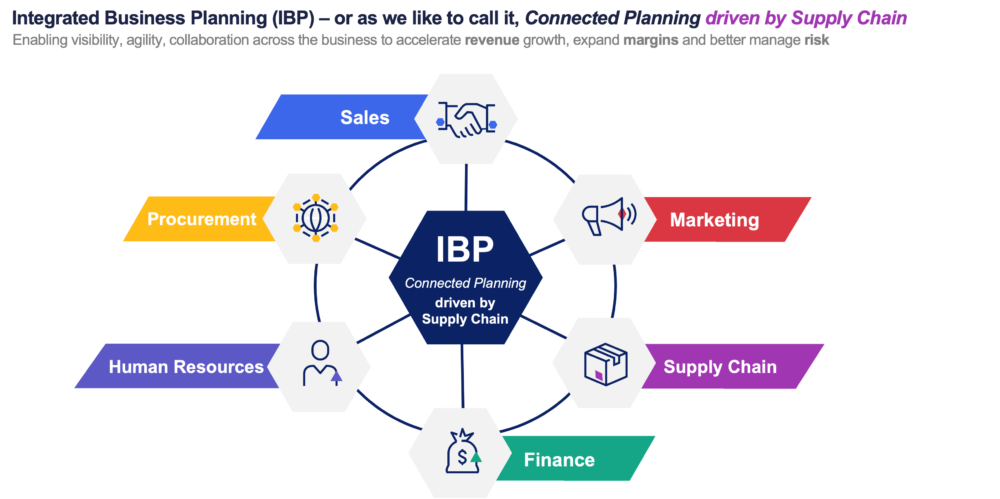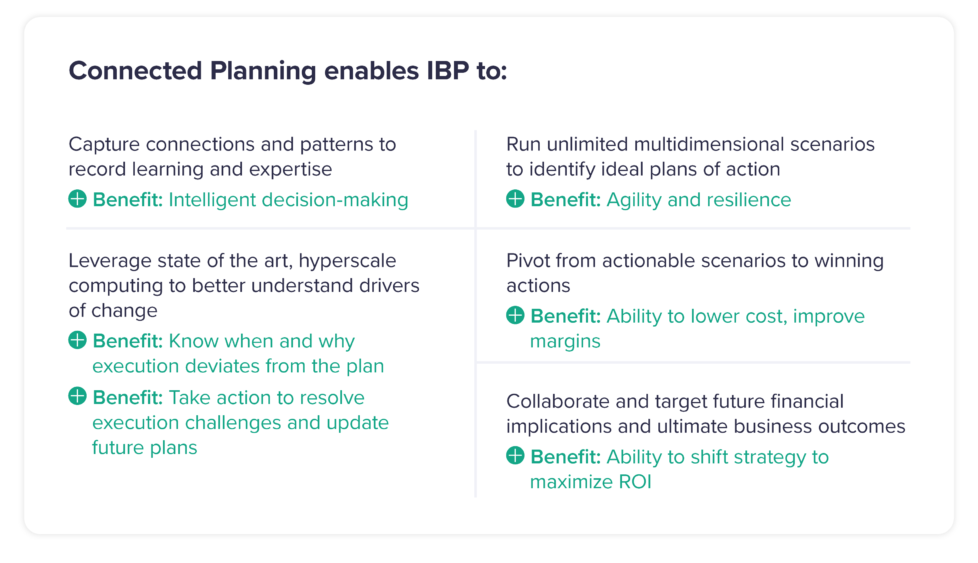We believe Gartner Magic Quadrant reinforces the increasing importance of Integrated Business Planning


Gartner’s 2022 Magic Quadrant for Supply Chain Planning Solutions recognizes Anaplan as a leading software to enable Integrated Business Planning. Here's why.
Anaplan is recognized as a Leader in 2022 Gartner® Magic Quadrant™ for Supply Chain Planning Solutions.
We believe because of Anaplan’s unique ability to enable alignment of supply chain plans to those of sales, finance, and others through Connected Planning, it’s the ideal platform for enablement of integrated business planning (IBP). Anaplan has been named based on its Ability to Execute and Completeness of Vision. This blog explains how Connected Planning facilitates IBP, and how they’re related, to allow leaders to apply both concepts for optimal performance.

What is the Gartner Magic Quadrant for Supply Chain Planning Solutions?
According to Gartner, “supply chain planning is a capability that became an area of importance to many companies in the early stages of the COVID-19 pandemic.” As disruption continued to create shifts in demand, volatility within the supply chain multiplied, increasing the need to prioritize technology solutions. In fact, the report states, “the subsequent supply chain challenges that have spanned the world throughout 2021 have further highlighted the need for comprehensive integrated business planning, S&OP and S&OE processes.”
The Supply Chain Planning Solution Magic Quadrant reviews solution providers’ ability to address planning end-to-end (demand, supply, S&OP) and converge planning decisions from executive to operational levels. Gartner uses a wide range of parameters to evaluate supply chain planning solutions to provide leaders with the criteria they need to inform their solution partner selection process. In fact,according to Gartner, “supply chain planning technology is needed to facilitate responsive, agile planning that supports a company’s strategic goals.”
How it is used
Gartner Magic Quadrant gives enterprise technology shoppers an unbiased assessment of how well competing providers are performing against Gartner’s market view and is supplemented by validated user reviews.
What is the difference between IBP and Connected Planning?
Connected Planning from Anaplan provides all the features required to orchestrate better business performance. Strategy, planning, and execution decision-making converges across business units and business roles with key planning capabilities, decision support, and collaboration tools.
Connected Planning supports integrated business planning from demand through supply and scenario planning enables balancing of demand and supply in your sales and operations planning process.Anaplan customers often extend supply chain planning to finance, workforce, sales, and marketing planning as part of their IBP journey.

In contrast, the core concept of IBP itself is connecting all planning capabilities throughout the entire business. This allows leaders to balance resources and funding with the business’s financial goals. IBP requires process excellence, frequent collaboration, tools for alignment, scenario assessment, and decision support. Anaplan customers leverage the features and capabilities of Connected Planning to realize their IBP goals.
What does IBP unlock?
Highly mature IBP processes have been shown to deliver benefits in customer satisfaction and better management of working capital to improved supplier performance.
When businesses are ready to transition to IBP, they’ll benefit from the integration of all planning functions across the company. Timely alignment of diverse objectives drives consensus and reduces decision latency. This also provides for effective and decisive collaboration, breeding a culture of shared responsibility.
Beyond the cultural shifts, the ability to evaluate multiple planning scenarios with simple “what-if” analysis encourages resilience, and early insights into challenges with supply chain materials, capacity, costs, and revenue, and allows for agile response.
With the right supporting technology and process, IBP helps supply chain leaders align mid-to long-term plans across the end-to-end supply chain as well as effectively managing near-term change driven by supply disruption or order fluctuation.
Conclusion
We feel Anaplan’s inclusion in2022 Gartner Magic Quadrant for Supply Chain Planning Solutions proves that Connected Planning is integral for supply chain planning excellence, as it reinforces Anaplan’s Connected Planning software as a key solution for supply chain leaders. As Connected Planning enables IBP, the two concepts work together to provide optimal business outcomes, and help supply chain leaders manage agile and resilient supply chain planning. Leaders need to consider using Connected Planning to break silos and open collaboration channels for shared insights and better ROI.
Gartner, Magic Quadrant for Supply Chain Planning Solutions, Amber Salley, Tim Payne, Pia Orup Lund, Janet Suleski, 16th May 2022
Gartner does not endorse any vendor, product or service depicted in its research publications and does not advise technology users to select only those vendors with the highest ratings or other designation. Gartner research publications consist of the opinions of Gartner’s Research & Advisory organization and should not be construed as statements of fact. Gartner disclaims all warranties, expressed or implied, with respect to this research, including any warranties of merchantability or fitness for a particular purpose.
